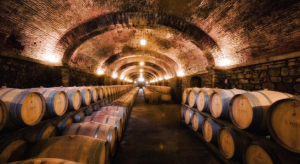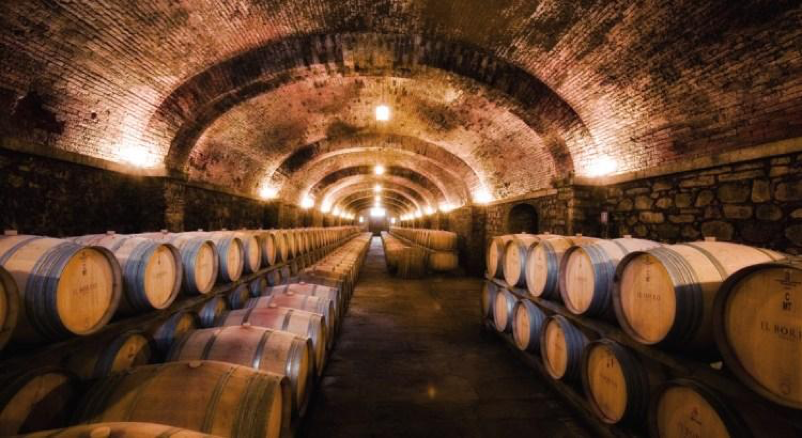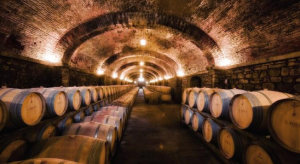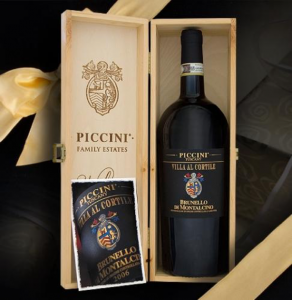The Country of the Wine
Italy is a world wine producer with 20 official wine regions, and wine is produced from over 300 recognized varieties of grapes. Italian wines are and are sought on all continents. Today, we are convinced that the ancient Greeks were right to call the territories of present Italy “the land of wine.”
Until just recently, Italy was the first in the world with an annual production of 7 500 000 tons of wine. In practice, this means that every fifth bottle in the world has been an Italian wine.
In recent years the production of Italian wines has been reduced to 6 million tonnes, but Italy remains at the top international charts. All this has led to highly developed wine tourism in the country of connoisseurs all over the world. The great variety of fine Italian wines, however, often confuses tourists. How to “harvest” the best?
Uniqueness “to the last Milliliter”
Among the many types of grapes that make good Italian wines are typical of Italy. They are produced under certain climatic conditions, soils, cultivation technology. The wine they produce is specific, in another region can not be obtained.
These Italian wines are labeled with DOCG – the highest quality grade defined by the Italian Wine Law: a controlled and guaranteed designation of origin. It certifies in which area wine is produced, what is the origin of the grape varieties, the climatic conditions, the given traditional technology.
74 Italian wines are labeled with DOCG. They are not all of the 20 wine regions of the country, but also from the Northern Areas, where they are most, both from Central and South. These include red, white, rosé, dry, sweet, sparkling, daily, for holidays, and so on – all possible species.
With this variety, the “best of the best” Italian wines would hardly be eaten because each according to their taste and preference would make the ranking among the many possibilities.
The requirements of the state for these Italian wines are detailed, strict, perfectionist – the wine must even be bottled in the given region in which it is produced. Experts at the Agriculture Ministry carry out controls, tastings and evaluation. Even the smallest violations remove the batch of the category.
The Kings of Wine
However, the red “Barolo” from the Piedmont region cannot be missed. They call it the King of Wine with the addition that it is also the Wine of the kings. They also think of it as a wine of intellectuals.
By law, before leaving the market, it matures for at least 3 years, one of which is obligatory in a bottle. Aging is prolonged if Riserva is for another two years. Today “Barolo” is made in a strictly defined area of the province of Cuneo. It is made of 100 percent of Nebiolo old grape variety known from the Roman Empire.

The Red Brunello di Montalcino is from Tuscany. Very dark, strong, with a taste of black berries. Asti is white wine, sweet and sparkling. It is made in the south of Piedmont by Moscato Bianco – one of the oldest grape varieties in the area. It is believed to have ever been transferred from Syria or Egypt, and here it has developed new qualities.
Sforzato di Valtellina is a very sweet dry red wine from Northern Italy made from partially dried grapes. The wine is thick, rich in flavor of added spices and high in alcohol.
From the southern parts of Italy you can mention the red wine Cerasuolo di Vittoria – it is from Sicily. It is obtained from the combination of two varieties – Nero D’Avvola – 50% to 70% and Frappato.
Nero D’Avvola is a typical Sicilian grape variety. Studies show that this variety has been here since ancient times. Cultivated first by the ancient gullies, then by the Romans and thus to the present day.
It is assumed that the other variety – Frappato, is a cross of Sangiovese and an unknown variety – this indicates DNA typing. The combination of Nero D’Avvola and Frappato, as well as technology – from drying grapes through vinification and aging to bottling, make this wine unique.
The Fine Italian Wines – with a Fine and Diverse Italian Cuisine
Everything here has to say that there are also very good Italian wines of the lower grade – DOC, which is “only” of controlled origin. Competition is great, and with these Italian wines, the old technology is strictly followed to preserve the specific characteristics of the wine.
Of course, the fine Italian wines go with fine Italian cuisine. Traditional Italian cuisine also has rich traditions that have been before the new era and have evolved, combining various internal and external influences.
Outside influences in traditional Italian cuisine can be mentioned potatoes, corn, pepper, tomatoes and others that local people have started to use a lot. Thus, over the centuries to today’s Italian cuisine, these foods are a major and irreplaceable part.
From even more distant times, traditional Italian cuisine has had influences from the entire Mediterranean region, with which the country has developed active links, especially commercial – both with the European part and with the Asian and the African ones.
Different geographical and geographical regions of Italy have influenced each other in different ways and degrees, which in each region created specific local Italian cuisine with specific cooking practices and products. In the popular Italian cuisine all over the world, there are many regional dishes that have become national. However, they retain their regional character, and so speaks of Italian cuisine and specialties such as South Tyrol, Tuscany, Rome, Venice, Sicily, Umbria, etc.
Italian Cuisine – Unique and Universal
Interesting for traditional Italian cuisine is how dishes “have changed places” at different times in social terms. In principle, there was food “of the common people” and the food of “higher society”.
But the pizza, which is today emblematic of traditional Italian cuisine, is of course the first in this “rating”. Initially it was for the commonwealth, but then it became a favorite food in the royal yards. Today, as is well known, pizza is a very popular food all over the world, as well as all Italian cuisine.
But this popularity poses a risk to many imitations. That’s why Italians with special laws protect not only their unique wines, but also their food – for example, certain types of cheeses can only be produced in certain areas in a precisely defined way.
In this sense there is a special pizza law. In order to be presented as a traditional Italian cuisine, it must be made from precise ingredients and spices, in a precisely defined proportion, according to a specific technology. Otherwise, it can not be called traditional Italian pizza.
Food and Wine – a Part of Culture
With this policy of protecting food and wine, Italy is one of the countries with the most developed culinary tourism. Here are organized special tours around the country for tasting food and wine. Part of the policy of developing culinary and wine tourism are the numerous culinary attractions that attract many lovers and connoisseurs
Food and wine are perceived as part of the culture in Italy, as they can get to know the country’s important facts. Food and wine show national and regional life, history, geographical knowledge about the regions, natural habits, rituals for which certain foods and wines are traditionally used, even information on people-psychology.
That is why many specialists believe that culinary and wine tourism are part of cultural tourism.
Italian Cuisine in Leonardo Bansko Restaurant
Connoisseurs can enjoy the real Italian food in our country as well. At restaurant Leonardo Bansko, the sophisticated Italian dishes are completely original, in this luxurious Italian restaurant in Bansko it is guaranteed that the food is from the traditional Italian cuisine. At the Italian restaurant Leonardo Bansko everything is prepared with authentic Italian recipes, which are strictly observed.
Here are many connoisseurs and connoisseurs who would also notice the small deviations – something this luxury restaurant can not afford.
They are delivered in the Leonardo Bansko restaurant by traditional Italian producers who have proven themselves with their products all over the world. Moreover, the luxury Italian restaurant Leonardo Bansko benefits only from products that have proven eco-origin.
As traditional Italian food has over the centuries had different influences from the countries in the Mediterranean region, the Leonardo Bansko Restaurant also offers Mediterranean cuisine.
There is also the exceptionally delicious barbecue josper.
Restaurant Leonardo Bansko – The Culinary Adventure
The specific food preparation at restaurant Leonardo Bansko can be seen by the guests live – in the show cooking section the chefs make their culinary spells very attractive to the eyes of the guests.
The name of the Leonardo Bansko restaurant as a place for connoisseurs of real Italian food makes it a place for promotions of famous Italian chefs. For example, Filippo Saviozi came specially at the Leonardo Bansko restaurant to present Tuscan cuisine in Bansko. Tuscany is one of the main culinary areas in Italy with very specific local cooking traditions.
The significance of the area in the culinary geography of Italy is also reflected by the fact that there is an international culinary academy. Among the culinary specialists presented at the Leonardo Bansko restaurant, chef Filippo Saviozi, accompanied by Italian fine wines, were cold veal, garnished with tuna sauce, risotto accompanied with black truffle and champagne, octopus salad, vegetables and potatoes, Fish in white wine sauce, with a complement of cherry tomatoes, capers and olives, and others. The presentation ended with a classic dessert Tiramisu.
As an Italian restaurant, the atmosphere of the Leonardo Bansko restaurant is romantic from the Italian Mediterranean – spacious, sunlit, with lots of greenery in the flower gardens around the comfortable tables and chairs dipped in discreet fragrance of flowers. This creates the feeling of coziness and tranquility.
The Leonardo Bansko restaurant is open all year round, while in winter the interior is complemented by a fireplace. Its capacity is 60 seats.







